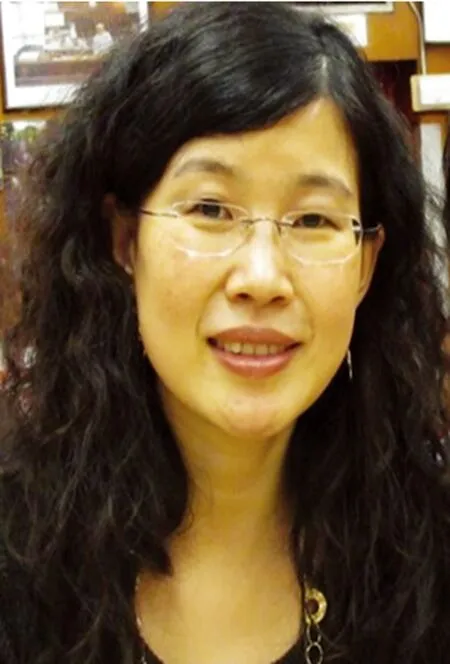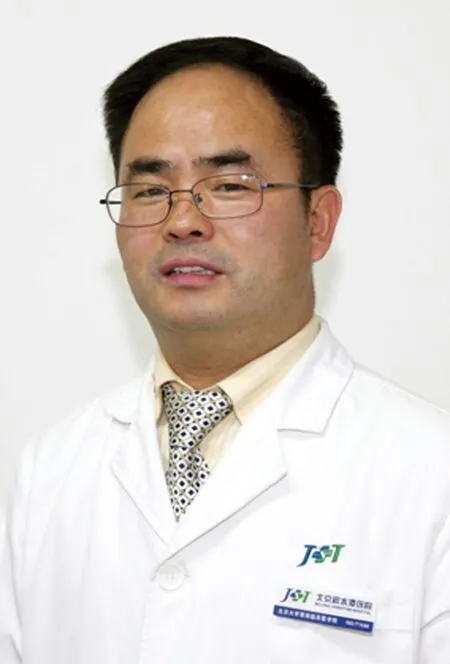Commentary:clinical imaging in measuring visceral adipose tissue and other body components
,
(1.Obesity Research Center Department of Medicine and Institute of Human Nutrition ColumbiaUniversity Medical Center 1150 Saint Nicholas Avenue,Suite 121 New York,New York,10032 USA;2.Department of Radiology,Beijing Jishuitan Hospital,Peking University,Beijing,100035,China)
Commentary:clinical imaging in measuring visceral adipose tissue and other body components
ShenWei1,ChengXiaoguang2
(1.ObesityResearchCenterDepartmentofMedicineandInstituteofHumanNutritionColumbiaUniversityMedicalCenter1150SaintNicholasAvenue,Suite121NewYork,NewYork,10032USA;2.DepartmentofRadiology,BeijingJishuitanHospital,PekingUniversity,Beijing,100035,China)
In recent years it has been recognized that not only total amount of fat,but also fat distribution plays an important role in metabolism.Visceral adipose tissue(VAT),the most important component of central obesity,is closely related to insulin resistance and hyperlipidemia.It is hypothesized that an overflow of free-fatty acid and an increased secretion of inflammatory factors toward liver impairs insulin resistance and lipid metabolism[1].Obesity is a risk factor for many chronic diseases and obesity may interact with the underlying pathophysiology of different diseases.
1 VAT measurement techniques
Among the methods that characterize obesity,body mass index(BMI) is the most widely used tool,however BMI does not provide any information on fat distribution.Waist circumference(WC) is a proxy for central obesity but does not differentiate between VAT and subcutaneous adipose tissue(SAT).In this issue,a study compared anthropometric measures with QCT in measuring VAT.It is found that the error for WC to estimate VAT was relatively high.These findings in a Chinese sample are consistent with previous reports in western population.Some models of dual-energy X-ray absorptiometry(DXA) provide VAT reading,which are derived from DXA geometric models and are validated against VAT measured by computed tomography(CT) in cross-sectional studies.CT and magnetic resonance imaging (MRI) are the only technologies that can directly quantify VAT.VAT is quantified by using single-slice or multi-slice techniques[2].A single-slice scan best estimates VAT at 5 to 10 cm above L4-L5,at T12-L1,or at the L1-L2 level[2-4].Although single slice imaging is adequate in estimating total VAT in large scale cross-sectional studies,multi-slice imaging is more accurate in predicting SAT and VAT changes during weight loss[5].
2 Clinical imaging capacity on body composition measurements
Although CT and MRI are the most accurate methods in measuring VAT,they are not widely used due to the radiation involved in CT and the high cost of both CT and MRI[6].However,CT and MRI are clinically collected for diagnosis,classification,and treatment evaluation in various diseases.Compared to imaging that is collected only for the purpose of research,clinical imaging has the advantage of adding no additional burden or radiation to patients.Recent advances of CT and MRI made it possible to quantify total body and regional adiposity,to map adipose tissue distribution,and to evaluate ectopic fat.Quantitative CT(QCT) has advantage of quantifying organ fat such as liver fat more accurately than conventional CT(ref).Radiomics is another emerging field that takes advantage of clinically collected image scans by post-processing tumor scans[7].In this issue,a study found that QCT and MRI are comparable in measuring VAT and SAT.Although CT and MRI are generally considered comparable in measuring VAT,the analysis of CT is less technical demanding as CT,and is less likely to be affected by artifacts compared with MRI.In this issue,clinically collected imaging has been used to quantifying both muscle and adipose tissue.
3 Disease and Obesity
There is no controversy that obesity is a risk factor for cardiovascular diseases,diabetes,strokes,cancer,etc.In recent years it has been found that obesity may also influence the outcomes and prognoses of different diseases including cancer,chronic obstructive pulmonary disease(COPD),osteoporosis,and acromegaly.In this issue a study found that malignant gynecologic tumor patients had higher amount of fat than benign gynecologic disease.The American Society of Clinical Oncology (ASCO) position statement on obesity and cancer stated that obesity is a major risk for cancer prognosis,and is called for researching to understand the pathophysiology of obesity in cancer outcomes[8].Recent understanding is that obesity does not translate to the same outcomes for everyone[9].Each malignancy may be also distinctly interact with the underlying pathophysiology of obesity.
4 In summary
MRI and CT are increasingly employed in both clinical trials and clinical care.These scans are used for diagnosis,disease staging,as well as treatment evaluation.Image measured VAT as well as other body components might be used for evaluating improving disease outcomes.The digitalization and centralization of these images are allowed for clarifying obesity related questions in various diseases.Imaging offers enormous opportunities in obesity care and prevention in diseases.
[1]Björntorp P.Classification of obese patients and complications related to the distribution of surplus fat[J].Nutrition,1990,6(2):131-137.
[2]Shen W,Punyanitya M,Chen J,et al.Visceral adipose tissue:relationships between single slice areas at different locations and obesity-related health risks[J].Int J Obes (Lond),2007,31(5):763-769.
[3]Shen W,Punyanitya M,Wang ZM,et al.Visceral adipose tissue:relations between single-slice areas and total volume[J].Am J Clin Nutr,2004,80(2):271-278.
[4]Irlbeck T,Massaro JM,Bamberg F,et al.Association between single-slice measurements of visceral and abdominal subcutaneous adipose tissue with volumetric measurements:the Framingham Heart Study[J]. Int J Obes (Lond),2010,34(4):781-787.
[5]Shen W,Chen J,Gantz M,et al.A Single MRI slice does not accurately predict visceral and subcutaneous adipose tissue changes during weight loss[J].Obesity (Silver Spring),2012,20(12):2458-2463.
[6]Shen W,Wang ZM,Punyanita M,et al.Adipose tissue quantification by imaging methods:a proposed classification[J].Obes Res,2003,11(1):5-16.
[7]Aerts HJ,Velazquez ER,Leijenaar RT,et al.Decoding tumour phenotype by noninvasive imaging using a quantitative radiomics approach[J].Nat Commun,2014(5):4006.
[8]Ligibel JA,Alfano CM,Courneya KS,et al.American Society of Clinical Oncology position statement on obesity and cancer[J].J Clin Oncol,2014,32(31):3568-3574.
[9]Azvolinsky A.Cancer prognosis:role of BMI and fat tissue[J].J Natl Cancer Inst,2014,106(6):dju177.
R445
A
1671-8348(2016)30-4177-02
2016-03-18
2016-07-06)

沈溦

程晓光
�家述评·
10.3969/j.issn.1671-8348.2016.30.001
沈溦:研究员,美国哥伦比亚大学医学院医学系和营养学院助理教授,哥伦比亚大学肥胖研究中心影像分析实验室主任、人体组成实验室副主任,是美国国立卫生院(NIH)资助的多个肥胖领域MRI和CT项目的首席科学家(Principal Investigator)。目前她的R01项目研究减肥过程中和能量代谢变化有关的器官大小变化。其最新研究方向是疾病、肥胖及人体组成的关系。目前已发表70多篇SCI同行评议文章,并和多位临床医师和科学家合作将影像学人体组成方法应用于肥胖、糖尿病、肢端肥大症、神经性厌食症、癌症、柯兴氏病、非酒精性脂肪肝炎、特发性骨质疏松、艾滋病、多囊卵巢综合征、肌萎缩等病症的研究。其领导的影像分析实验室是世界领先的人体组成影像分析的中心实验室,完成了美国和国际的多个NIH和药厂的多中心临床试验的影像分析,包括大于10万份MRI、MRS、CT和DXA的影像分析。
程晓光:现任北京积水潭医院放射科主任医师/主任/教授/博导。北京市创伤骨科研究所硕士,比利时鲁汶大学博士,美国加州大学旧金山分校博士后。现任亚洲骨骼学会(AMS)副主席,中华医学会骨质疏松与骨矿盐疾病分会常委,中国医师协会放射医师分会常务兼总干事长。中华医学会放射学分会骨肌放射影像专委会副主任委员,北京医学会骨质疏松与骨矿盐疾病分会常委等。任《中国骨质疏松杂志》副主编,《中国临床医学影像杂志》编委,《中国医学影像技术》编委,《中华骨质疏松与骨矿盐疾病杂志》编委,《中华放射学杂志》特邀编委,《中国CT和MRI杂志》编委,《临床放射学杂志》编委。长期从事放射学,在肌骨影像诊断和研究方面具有丰富经验和成果,尤其是骨质疏松研究领域成果在国内得到广泛应用,并得到国际学术界的认可。

